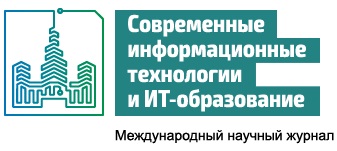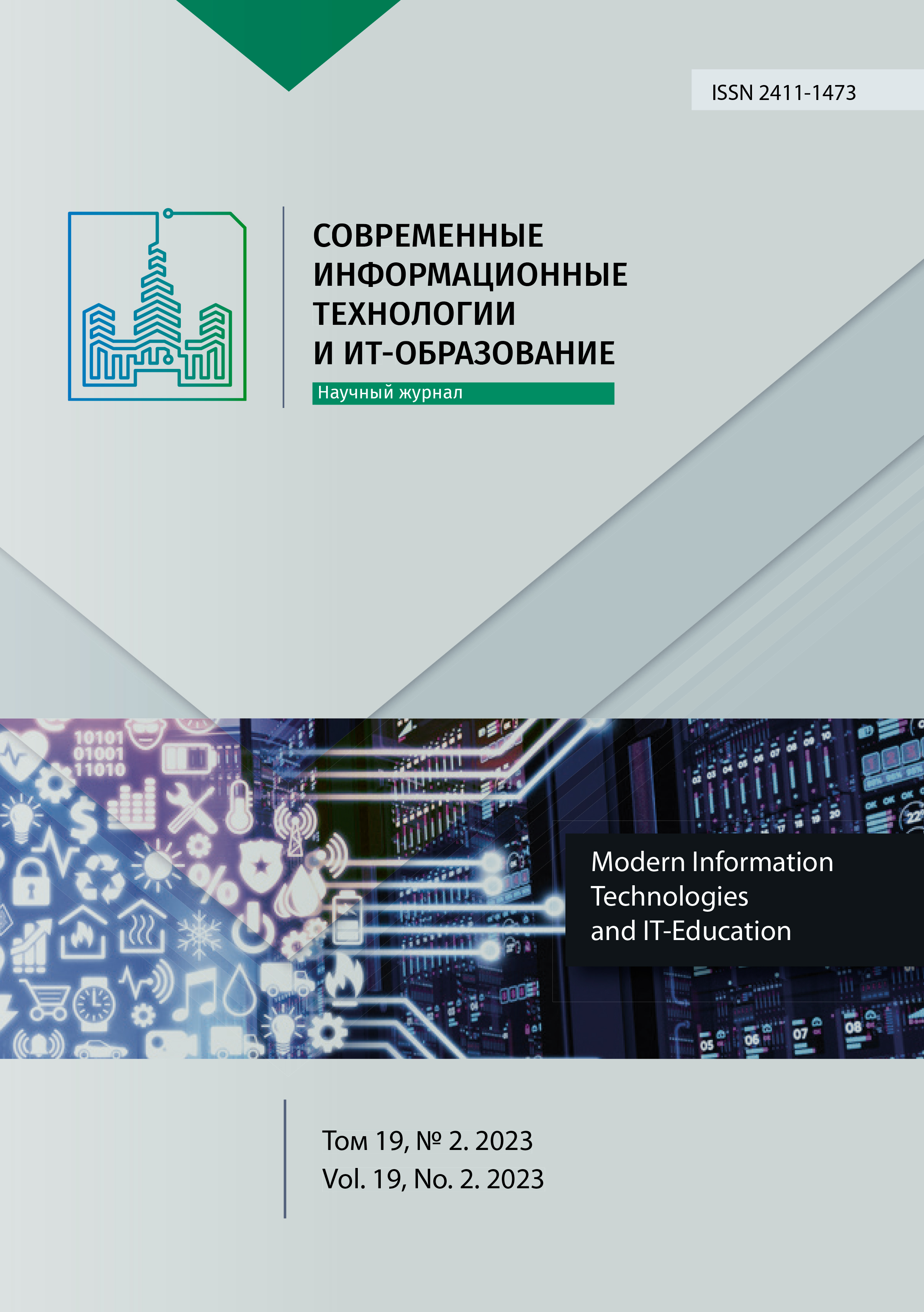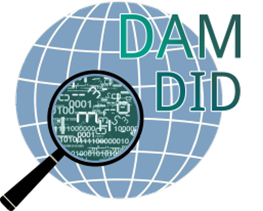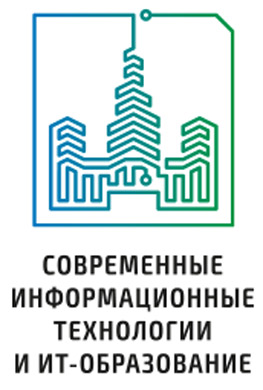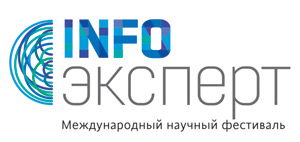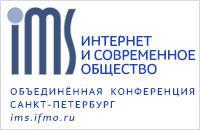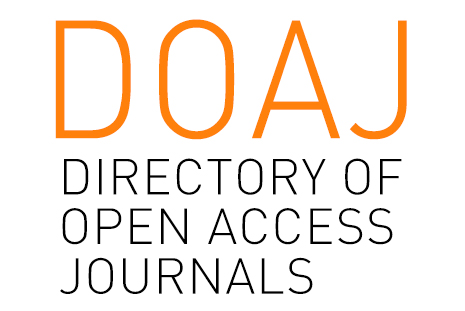Актуальность создания цифрового двойника для управления распределенными центрами сбора, хранения и обработки данных
Аннотация
В работе рассматриваются области применения цифровых двойников. Основное внимание уделяется возможностям использования цифровых двойников для центров хранения и обработки данных. Рост популярности распределенных систем сбора, хранения и обработки сверхбольших объемов данных в различных областях деятельности человека приводит к необходимости создания их цифрового двойника. Главным элементом цифрового двойника является компонент, осуществляющий моделирование системы. В связи с чем обоснованы преимущества и недостатки существующих средств моделирования распределенных центров хранения и обработки данных, в частности узкоспециализированных библиотек Bricks, OptorSim и GridSim, а также программных комплексов, в основе которых лежат перечисленные инструменты. В результате проведенного анализа сделан вывод о необходимости создания иного подхода к моделированию, реализация которого позволит создавать цифровые двойники распределенных систем для проведения исследований в области эффективности и надежности функционирования распределенных центров сбора, хранения и обработки данных. Появится возможность проверять различные сценарии масштабирования сложных распределенных систем с учетом процессов, происходящих в системе, и требований к потокам данных и потокам задач. В заключении сформулированы задачи по разработке программного инструмента, который позволит создавать цифровые двойники распределенных центров сбора, хранения и обработки данных.
Литература
2. Barricelli B.R., Casiraghi E., Fogli D. Definitions, Characteristics, Applications, and Design Implications. IEEE Access. 2019;7:167653-167671. https://doi.org/10.1109/ACCESS.2019.2953499
3. Denisov A.S., Kuverin I.Yu. Features of the circuitry solution of use of piezometers by development of diagnostic aids of cars. Tekhnicheskoe regulirovanie v transportnom stroitel stve = Technical Regulation in Transport Construction.2020;(3):165-168. (In Russ., abstract in Eng.) EDN: YGLIID
4. Yang J., Zhang W., Liu Y. Subcycle fatigue crack growth mechanism investigation for aluminum alloys and steel (special session on the digital twin). In: 54th AIAA/ASME/ASCE/AHS/ASC Structures, Structural Dynamics and Materials Conference. Boston, MA, United States; 2013. https://doi.org/10.2514/6.2013-1499
5. Shalumov A.S., Shalumova N.A., Shalumov M.A. Aviation electronics digital twin: simulation of physical processes in the formation of an electronic model. Automation. Modern Technologies. 2021;75(9):403-415. (In Russ., abstract in Eng.) EDN: LSASMI
6. Filatov A.R. A digital twin of the ship hull, purpose and main principles of development. Transactions of the Krylov State Research Centre. 2021;(4):87-92. (In Russ., abstract in Eng.) https://doi.org/10.24937/2542-2324-2021-4-398-87-92
7. Shevchenko D.V. Methodology for constructing digital twins in railway transport. Russian Railway Science Journal. 2021;80(2):91-99. (In Russ., abstract in Eng.) https://doi.org/10.21780/2223-9731-2021-80-2-91-99
8. Bykova V.N., Kim E., Gadzhialiev M.R., Musienko V.O., Orudzhev A.O., Turovskaya E.A. Application of a digital twin in the oil and gas industry. Actual Problems of Oil and Gas. 2020;(1):8. (In Russ., abstract in Eng.) https://doi.org/10.29222/ipng.2078-5712.2020-28.art8
9. Tikhonov A.I., Stulov A.V., Karzhevin A.A., Podobny A.V. Development of a nonlinear model of a three-phase transformer to study the effect of asymmetry of the magnetic system on the operation of the device in arbitrary modes. Vestnik IGEU. 2020;(1):22-31. (In Russ., abstract in Eng.) https://doi.org/10.17588/2072-2672.2020.1.022-031
10. Bruynseels K., Santoni de Sio F., Hoven J. Digital Twins in Health Care: Ethical Implications of an Emerging Engineering Paradigm. Frontiers in genetics. 2018;9:31. https://doi.org/10.3389/fgene.2018.00031
11. Lehtola V.V., Koeva M., Elberink S.O., Raposo P., Virtanen J.P., Vahdatikhaki F., Borsci S. Digital twin of a city: Review of technology serving city needs. International Journal of Applied Earth Observation and Geoinformation. 2022;114:102915. https://doi.org/10.1016/j.jag.2022.102915
12. Ivanov S.A., Nikolskaya K.Yu., Radchenko G.I., Sokolinsky L.B., Zymbler M.L. Digital Twin of a City: Concept Overview. Bulletin of the South Ural State University. Series: Computational Mathematics and Software Engineering. 2020;9(4):5-23. (In Russ., abstract in Eng.) https://doi.org/10.14529/cmse200401
13. Amirxanyan A.G. Cifrovye dvojniki v logistike [Digital twins in logistics]. Modern science. 2020;(1-2):37-40. (In Russ., abstract in Eng.) EDN: QTZJIE
14. Rosen R., Wichert G. Von, Bettenhausen K.D. About the importance of autonomy and digital twins for the future of manufacturing. IFAC-PapersOnLine. 2015;48(3):567-572. https://doi.org/10.1016/j.ifacol.2015.06.141
15. Nemati K., Zabalegui A., Bana M., Seymour M.J. Quantifying data center performance. In: 2018 34th Thermal Measurement, Modeling & Management Symposium (SEMI-THERM). San Jose, CA, USA; 2018. p. 141-147. https://doi.org/10.1109/SEMI-THERM.2018.8357365
16. Berezhnaya A., Dolbilov A., Ilyin V., Korenkov V., Lazin Y., Lyalin I., Mitsyn V., Ryabinkin E., Shmatov S., Strizh T., Tikhonenko E., Tkachenko I., Trofimov V., Velikhov V., Zhiltsov V. LHC Grid Computing in Russia: presentand future. Journal of Physics: Conference Series. 2014;513:062041. https://doi.org/10.1088/1742-6596/513/6/062041
17. Kekelidze V., Kovalenko A., Lednicky R., Matveev V., Meshkov I., Sorin A., Trubnikov G. The NICA Project at JINR Dubna. EPJ Web of Conferences. 2014;71:00127. https://doi.org/10.1051/epjconf/20147100127
18. Serebrov A.P., Vassiljev A.V., Varlamov V.E., Geltenbort P., Gridnev K.A., Dmitriev S.P., Dovator N.A., Egorov A.I., Ezhov V., Zherebtsov O.M., Zinoviev V.G., Ivochkin V.G., Ivanov S.N., Ivanov S.A., Kolomensky E.A., Konoplev K.A., Krasnoschekova I.A., Lasakov M.S., Lyamkin V., Martemyanov L.P., Murashkin A.N., Neustroev P.V., Onegin M.S., Petelin A.L., Pirozhkov A., Polyushkin A.O., Prudnikov D.V., Ryabov V., Samoylov R.M., Sbitnev S.V., Fomin A.K., Fomichev A.V., Zimmer O., Cherny A., Shoka I. Program for studying fundamental interactions at the PIK reactor facilities. Physics of Atomic Nuclei. 2016;79(3):293-303. https://doi.org/10.1134/S1063778816030145
19. Baranov G.N., Bogomyagkov A.V., Levichev E.B., Sinyatkin S.V. Magnet lattice optimization for Novosibirsk fourth generation light source SKIF. Siberian Journal of Physics. 2020;15(1):5-23. (In Russ., abstract in Eng.) https://doi.org/10.25205/2541-9447-2020-15-1-5-23
20. Avrorin A.D., Avrorin A.V., Aynutdinov V.M., Bannash R., Belolaptikov I.A., Brudanin V.B., Budnev N.M., Doroshenko A.A., Domogatsky G.V., Dvornický R., Dyachok A.N., Dzhilkibaev Z.A., Fajt L., Fialkovsky S.V., Gafarov A.R., Golubkov K.V., Gres T.I., Honz Z., Kebkal K.G., Kebkal O.G., Khramov E.V., Kolbin M.M., Konischev K.V., Korobchenko A.P., Koshechkin A.P., Kozhin V.A., Kulepov V.F., Kuleshov D.A., Milenin M.B., Mirgazov R.A., Osipova E.R., Panfilov A.I., Pan kov L.V., Petukhov D.P., Pliskovsky E.N., Rozanov M.I., Rjabov E.V., Rushay V.D., Safronov G.B., Simkovic F., Shoibonov B.A., Solovjev A.G., Sorokovikov M.N., Shelepov M.D., Suvorova O.V., Shtekl I., Tabolenko V.A., Tarashansky B.A., Yakovlev S.A., Zagorodnikov A.V., Zurbanov V.L. Baikal-GVD: status and prospects. EPJ Web of Conferences. 2018;191:01006. https://doi.org/10.1051/epjconf/201819101006
21. An F., et al. Neutrino Physics with JUNO. Journal of Physics G: Nuclear and Particle Physics. 2016;43(3):030401. https://doi.org/10.1088/0954-3899/43/3/030401
22. Korenkov V.V., Nechaevskiy A.V. DataGrid simulation packages. Sistemnyj analiz v nauke i obrazovanii = System Analysis in Science and Education. 2009;(1):21-35. (In Russ., abstract in Eng.) EDN: KNNWPL
23. Korenkov V.V., Nechaevskiy A.V., Ososkov G.A., Pryahina D.I., Trofimov V.V., Uzhinskiy A.V. Simulation of Grid and Cloud Services as the Means of the Efficiency Improvement of Their Development. CEUR Workshop Proceedings. 2014;1297:13-19. Available at: https://ceur-ws.org/Vol-1297/13-19_paper-4.pdf (accessed 08.09.2023). (In Russ., abstract in Eng.)
24. Korenkov V.V., Nechaevskiy A.V., Ososkov G.A., Pryahina D.I., Trofimov V.V., Uzhinskiy A.V. Synthesis of the simulation and monitoring processes for the development of big data storage and processing facilities in physical experiments. Computer Research and Modeling. 2015;7(3):691-698. (In Russ., abstract in Eng.) https://doi.org/10.20537/2076-7633-2015-7-3-691-698
25. Kadochnikov I., Korenkov V., Mitsyn V., Pelevanyuk I., Strizh T. Service monitoring system for JINR Tier-1. EPJ Web of Conferences. 2019;214:08016. https://doi.org/10.1051/epjconf/201921408016
26. Korenkov V.V., Nechaevskiy A.V., Ososkov G.A., Pryakhina D.I., Trofimov V.V., Uzhinskiy A.V. Grid and cloud services simulation as an important step of their development. Sistemy i Sredstva Informatiki = Systems and Means of Informatics. 2015;25(1):4-19. (In Russ., abstract in Eng.) https://doi.org/10.14357/08696527 50 0
27. Nechaevskiy A.V., Pryahina D.I., Uzhinskiy A.V. Web-service development for the physical experiments data storage and processing simulation. Sistemnyj analiz v nauke i obrazovanii = System Analysis in Science and Education. 2015;(4):28-35. (In Russ., abstract in Eng.) EDN: WMEKGF
28. Korenkov V., Nechaevskiy A., Ososkov G., Pryahina D., Trofimov V., Uzhinskiy A., Balashov N. Web-Service Development of the Grid- loud Simulation Tools. Procedia Computer Science. 2015;66:533-539. https://doi.org/10.1016/j.procs.2015.11.060
29. Korenkov V., Nechaevskiy A., Ososkov G., Pryahina D., Trofimov V., Uzhinskiy A. Simulation concept of NICA-MPD-SPD Tier0-Tier1 computing facilities. Particles and Nuclei Letters. 2016;13(5):693-699. https://doi.org/10.1134/S154747711605029041
30. Kutovskiy N.A., Nechaevskiy A.V., Ososkov G.A., Pryahina D.I., Trofimov V.V. Simulation of interprocessor interactions for MPI-applications in the cloud infrastructure. Computer Research and Modeling. 2017;9(6):955-963. (In Russ., abstract in Eng.) https://doi.org/10.20537/2076-7633-2017-9-6-955-963
31. Nechaevskiy A., Ososkov G., Pryahina D., Trofimov V., Li W. Simulation approach for improving the computing network topology and performance of the China IHEP Data Center. EPJ Web of Conferences. 2019;214:08018. https://doi.org/10.1051/epjconf/201921408018

Это произведение доступно по лицензии Creative Commons «Attribution» («Атрибуция») 4.0 Всемирная.
Редакционная политика журнала основывается на традиционных этических принципах российской научной периодики и строится с учетом этических норм работы редакторов и издателей, закрепленных в Кодексе поведения и руководящих принципах наилучшей практики для редактора журнала (Code of Conduct and Best Practice Guidelines for Journal Editors) и Кодексе поведения для издателя журнала (Code of Conduct for Journal Publishers), разработанных Комитетом по публикационной этике - Committee on Publication Ethics (COPE). В процессе издательской деятельности редколлегия журнала руководствуется международными правилами охраны авторского права, нормами действующего законодательства РФ, международными издательскими стандартами и обязательной ссылке на первоисточник.
Журнал позволяет авторам сохранять авторское право без ограничений. Журнал позволяет авторам сохранить права на публикацию без ограничений.
Издательская политика в области авторского права и архивирования определяются «зеленым цветом» в базе данных SHERPA/RoMEO.
Все статьи распространяются на условиях лицензии Creative Commons «Attribution» («Атрибуция») 4.0 Всемирная, которая позволяет другим использовать, распространять, дополнять эту работу с обязательной ссылкой на оригинальную работу и публикацию в этом журналe.
